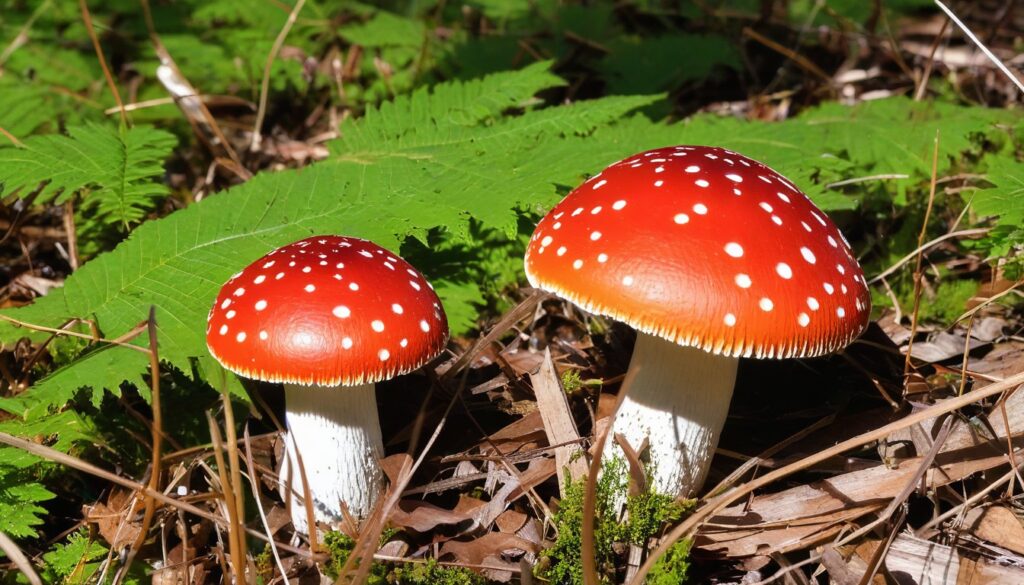Wyoming is a state known for its exquisite natural wonders, including its diverse plant and wildlife. However, with its abundant mushroom flora, there is a potential danger of encountering poisonous mushrooms while exploring the great outdoors. Accidental ingestion of toxic mushrooms can trigger severe health risks, underlining the importance of educating oneself on how to identify and avoid them. In this section, we will provide you with valuable insights into safeguarding yourself against poisonous mushrooms in Wyoming.
Key Takeaways
- Wyoming is home to a vast variety of mushroom species, and not all of them are safe for consumption.
- Knowing how to identify and differentiate between the various mushrooms is crucial to avoid potential health hazards.
- Some poisonous mushrooms may resemble edible mushroom species, making it essential to exercise caution and vigilance while foraging.
- Consuming poisonous mushrooms can cause severe health risks, including organ failure and death, emphasizing the need to handle them with care.
- Continued education and familiarizing oneself with native mushroom species, popular foraging areas, and safety guidelines can ensure a safe and enjoyable outdoor foraging experience.
Understanding the Risks of Poisonous Mushrooms
While mushroom foraging can be an exciting outdoor activity, it’s important to understand the potential risks associated with consuming or mishandling poisonous mushrooms. Consumption of deadly mushroom species can cause severe health complications, including organ failure, debilitation, and, in some cases, death.
The dangers of poisonous mushrooms cannot be overstated, and education is key to foraging safely. Anyone who plans to engage in mushroom foraging activities MUST learn to identify poisonous mushrooms and adhere to proper safety measures at all times.
By taking the time to educate oneself on recognizing poisonous mushrooms, we can safeguard ourselves and our loved ones against the potentially fatal consequences. Let’s delve into the risks associated with poisonous mushrooms and emphasize the importance of education and caution.
Native Mushroom Species in Wyoming
Wyoming boasts a diverse range of native mushroom species, each with their unique characteristics. Here are a few of the most common ones you might come across:
Mushroom Name | Physical Description | Habitat and Distribution |
|---|---|---|
Boletus edulis | A large, brown-capped mushroom with a broad stalk and a spongy texture. The stalk is often white or pale yellow. | Found in coniferous forests and mountainous areas of Wyoming, especially near pine and spruce trees. |
Agaricus campestris | A small to medium-sized mushroom with a brown cap and white gills. The cap is usually oval-shaped when young, but flattens out as it matures. | Common in grassy fields, meadows, and lawns, especially in the summer or early fall. |
Amanita muscaria | A striking mushroom with a bright red cap covered in white spots. The gills are initially white but turn a deep olive color as the mushroom matures. | Found in the dry, open woods of Wyoming, particularly under birch and spruce trees. |
Lactarius deliciosus | A medium-sized mushroom with an orange cap and white gills. When cut or broken, the cap exudes a milky, orange-colored sap. | Commonly found in pine forests during late summer and fall. |
Remember, always be cautious when foraging for mushrooms in Wyoming. While some species are edible and delicious, others can be toxic and potentially deadly. Keep your identification skills sharp and refer to expert resources when in doubt.
Identifying Poisonous Mushrooms
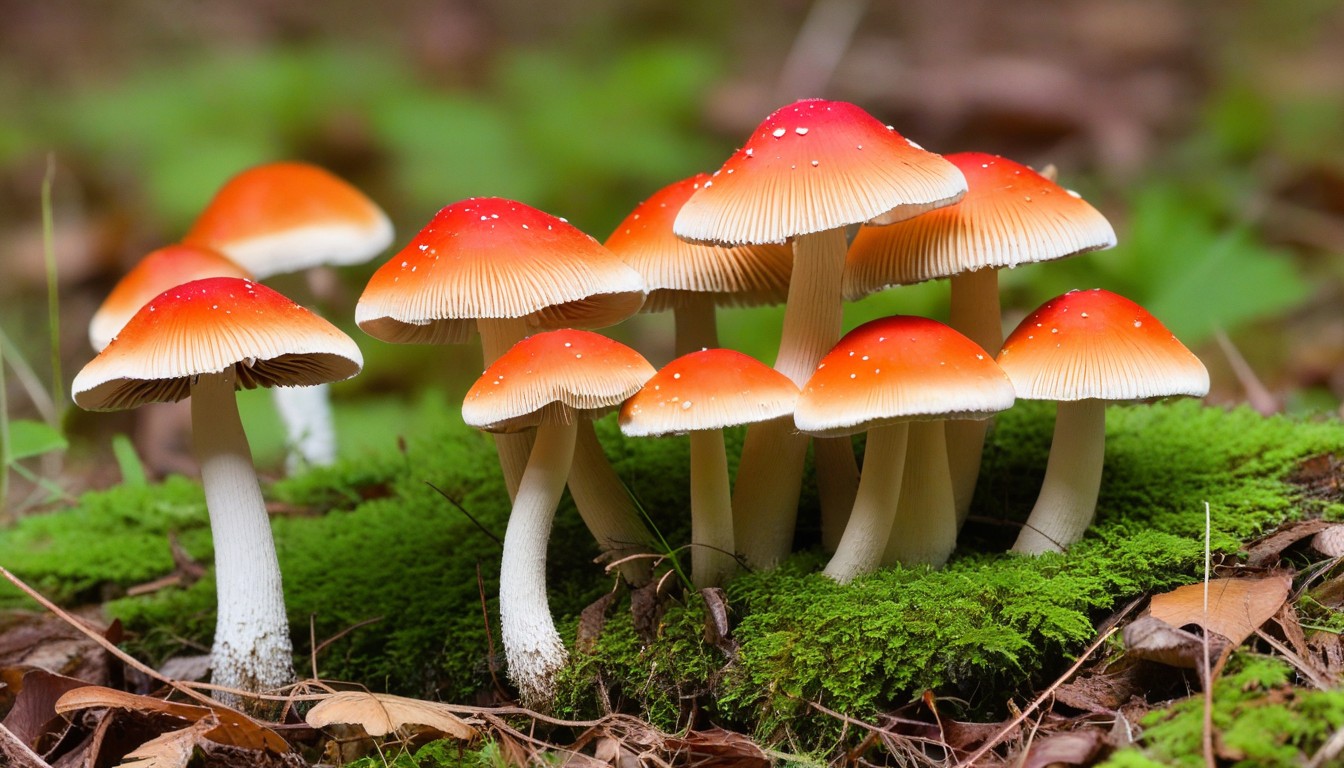
When out foraging for mushrooms, it’s crucial to be able to differentiate between poisonous and non-toxic mushroom species. Below are some key indicators and distinguishing characteristics to help you identify poisonous mushrooms:
Visual Indicators | Distinguishing Characteristics |
|---|---|
Cap Color: Some poisonous mushroom caps have bright, distinctive colors such as red, yellow, or orange | Gills: Certain poisonous mushrooms have gills that are either completely white or have a pink or brown tint |
Spore Color: The spore color of certain poisonous mushrooms is a distinct color not found in non-toxic species | Stem: Some poisonous mushrooms have stems that are heavily textured or have a distinctive ring |
Growth Pattern: Some poisonous mushroom species grow in clusters or have unusual shapes not found in non-toxic species | Scent: Certain poisonous mushrooms emit a characteristic odor that differs from non-toxic species. However, the lack of odor does not necessarily mean a mushroom is non-toxic |
Common poisonous mushroom species that may be found in Wyoming include:
- Amanita muscaria
- Galerina marginata
- Amanita phalloides
It’s important to note that this list is not exhaustive, and there may be other poisonous mushroom species present in Wyoming. If you’re unsure about a mushroom’s safety, it’s always best to err on the side of caution and avoid consuming it.
Toxicity Levels and Potential Health Risks
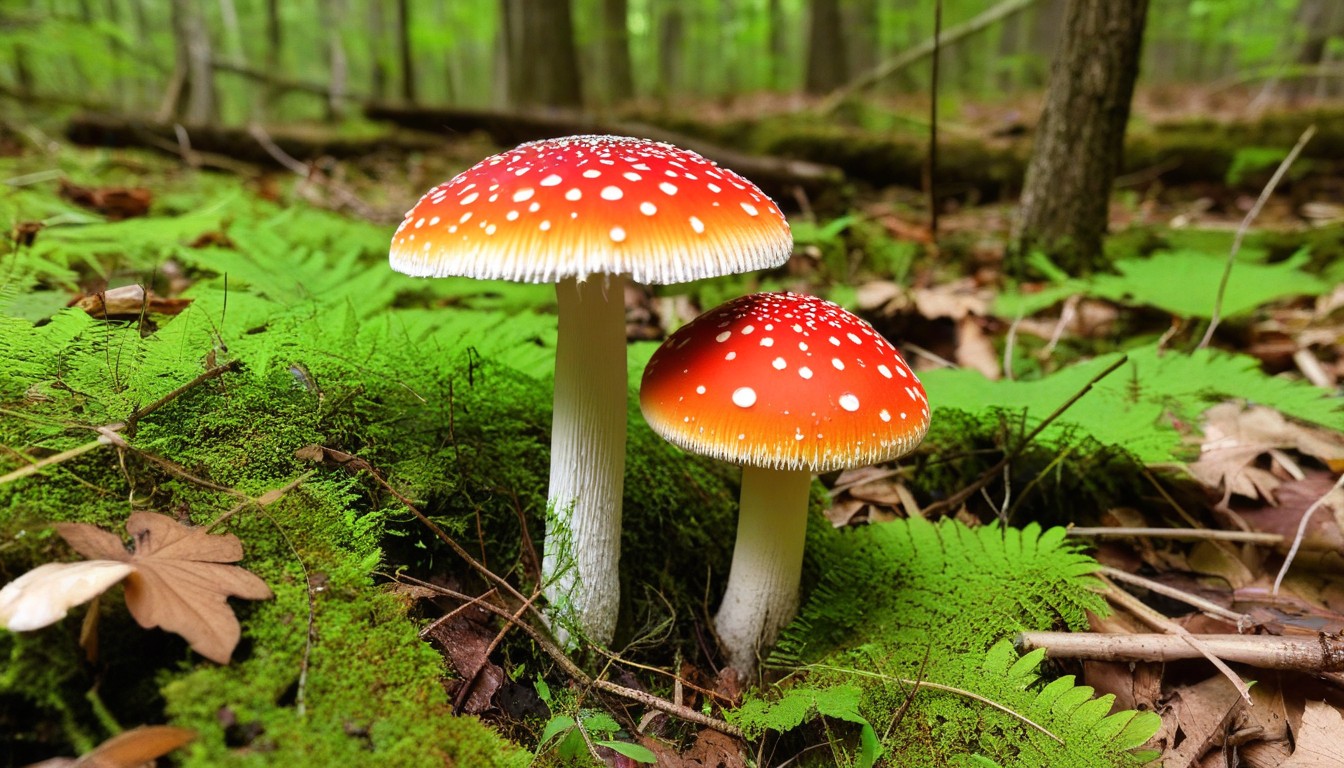
Different types of mushrooms can possess varying levels of toxicity, and if ingested, they can pose severe health risks. It’s important to note that some poisonous mushrooms can cause irreversible damage or even be fatal. Symptoms of mushroom poisoning can vary and might include vomiting, diarrhea, abdominal pain, or, in more severe cases, organ failure. Immediate medical attention is critical if anyone shows signs of mushroom poisoning, such as an upset stomach, sweating, or muscle cramps.
It’s important to call poison control or seek medical help immediately if you suspect that somebody has ingested poisonous mushrooms. Be sure to let medical professionals know which type of mushroom they or you consumed, toxic mushrooms can be deadly, hence early diagnosis is critical.
In general, it’s best to avoid consuming any mushroom species that you’re not entirely familiar with, especially if it’s growing wild. While certain wild mushroom varieties are safe for consumption, others can be deadly if consumed. No matter how tempting a mushroom may look or smell, it’s better to err on the side of caution and avoid consuming it.
If you are interested in foraging for mushrooms, always take the time to educate yourself on the different species that grow in your area. Consider joining a local foraging group and learning from experienced experts before heading out into the wilderness. And, if in any doubt, it’s better not to take the chance: leave that mushroom and look for something you’re sure is perfectly safe!
Popular Mushroom Foraging Areas in Wyoming
Wyoming is an excellent destination for mushroom foraging enthusiasts, offering various picturesque locations where you can savor the thrill of the hunt. Here are some popular mushroom foraging areas to explore in Wyoming:
Bridger-Teton National Forest
The Bridger-Teton National Forest is one of the most coveted mushroom foraging spots in Wyoming, thanks to its diverse terrain. You can find several mushroom species here, including morels, boletes, and chanterelles, among others.
Shoshone National Forest
With over 2.4 million acres of land, the Shoshone National Forest provides ample opportunities for mushroom foraging. Mushrooms like the porcini, golden chanterelles, and morels can be found in this forest.
Snowy Range Mountains
The Snowy Range Mountains offer abundant mushroom foraging opportunities in Wyoming. While here, keep an eye out for mushrooms like the Boletus edulis (king bolete) and the Amanita muscaria (fly agaric).
Nicodemus Wilderness Area
The Nicodemus Wilderness Area is situated in northwestern Wyoming, offering mushroom foragers an opportunity to explore its 16,000 acres of pristine wilderness. Here you can find mushrooms like the morels, boletes, and the chanterelles, among others.
Remember always to forage with caution, as it is essential to respect nature and leave the fragile ecosystem unscathed. It is also advisable to seek expert advice on mushroom identification before consuming any mushroom that you collect.
Mushroom Foraging Safety Tips
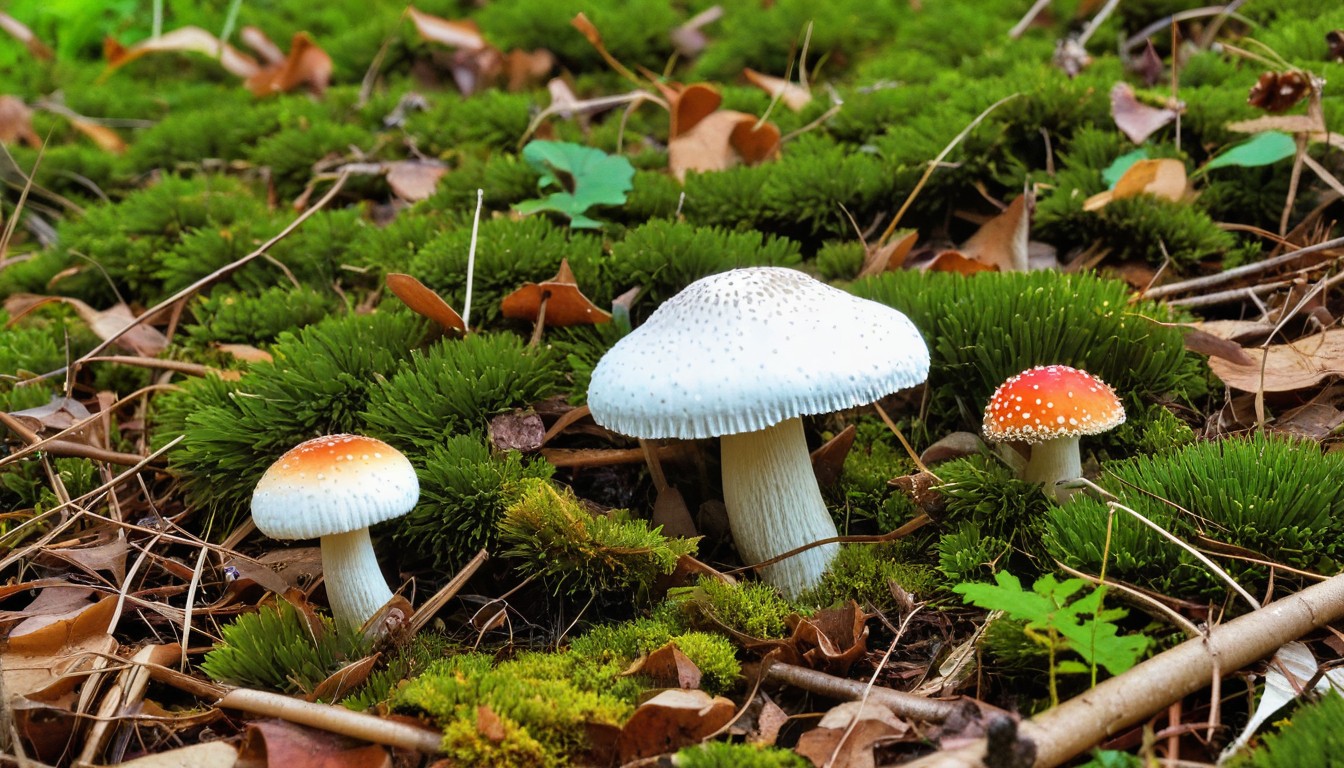
Foraging for mushrooms in Wyoming’s breathtaking landscapes is an adventure that requires adequate preparation and knowledge. Here are some essential mushroom foraging safety tips to keep in mind:
- Know Your Terrain: Before setting out, familiarize yourself with the terrain and the mushroom species that grow in the region. Bring a detailed map and a compass or GPS device to ensure you don’t lose your way.
- Dress Appropriately: Wear comfortable hiking shoes, preferably waterproof, to protect against snake bites, cuts, and scrapes. Dress in layers, including a hat, long sleeves, and pants to avoid sunburn or insect bites.
- Carry the Right Gear: Ensure you have a mushroom identification guidebook, a basket or mesh bag for collecting mushrooms, a knife for harvesting, and a first-aid kit. Don’t forget to bring plenty of water and snacks to keep you hydrated and energized.
- Practice Safe Harvesting: When collecting mushrooms, carefully remove the entire fruiting body, leaving any surrounding fungi undisturbed. Avoid damaging the soil or vegetation, and never harvest mushrooms near contaminated areas or heavy traffic areas.
- Identify Poisonous Mushrooms: Learn to identify poisonous mushrooms, mushroom look-alikes, and their distinguishing features. When in doubt, do not eat or touch unidentified mushrooms and seek professional help.
- Contact Poison Control: If you or someone you’re with shows symptoms of mushroom poisoning (nausea, vomiting, abdominal pain, etc.), contact the Poison Control Center (1-800-222-1222) immediately, or seek emergency medical attention.
By following these mushroom foraging safety tips, you can reduce the risks associated with mushroom hunting while enjoying Wyoming’s outdoors safely and responsibly.
Educating Yourself: Resources and Guidebooks
When it comes to mushroom foraging in Wyoming, educating yourself is crucial to minimize the risks associated with poisonous mushrooms. Luckily, there are several excellent resources and guidebooks available to help you enhance your knowledge and safety measures.
Resources
Wyoming Mycological Society – A non-profit organization dedicated to promoting the study and enjoyment of mushrooms. They organize mushroom forays and offer educational resources.
WaxCap Mushrooms of Eastern North America – An online guidebook that covers different waxcap species, including those found in Wyoming.
Guidebooks
Book Title | Author | Description |
|---|---|---|
Mushrooms of the Rocky Mountain Region | Vera Evenson | A comprehensive guide to over 550 mushroom species that grow in the Rocky Mountain region, including Wyoming. |
Edible and Medicinal Mushrooms of New England and Eastern Canada | David L. Spahr | A guide to over 90 edible and medicinal mushroom species found in New England and Canada, many of which also grow in Wyoming. |
Pacific Northwest Mushroom Hunter’s Field Guide | Joe Ammirati | Although not specific to Wyoming, this guidebook covers various mushroom species found in the Western US, including the Pacific Northwest. |
Remember to consult multiple resources and guidebooks to develop a more holistic understanding of mushroom foraging and identifying poisonous mushrooms. Continuously educate yourself to enhance your safety measures and to get the most out of your Wyoming mushroom foraging adventures!
Safe Mushroom Consumption
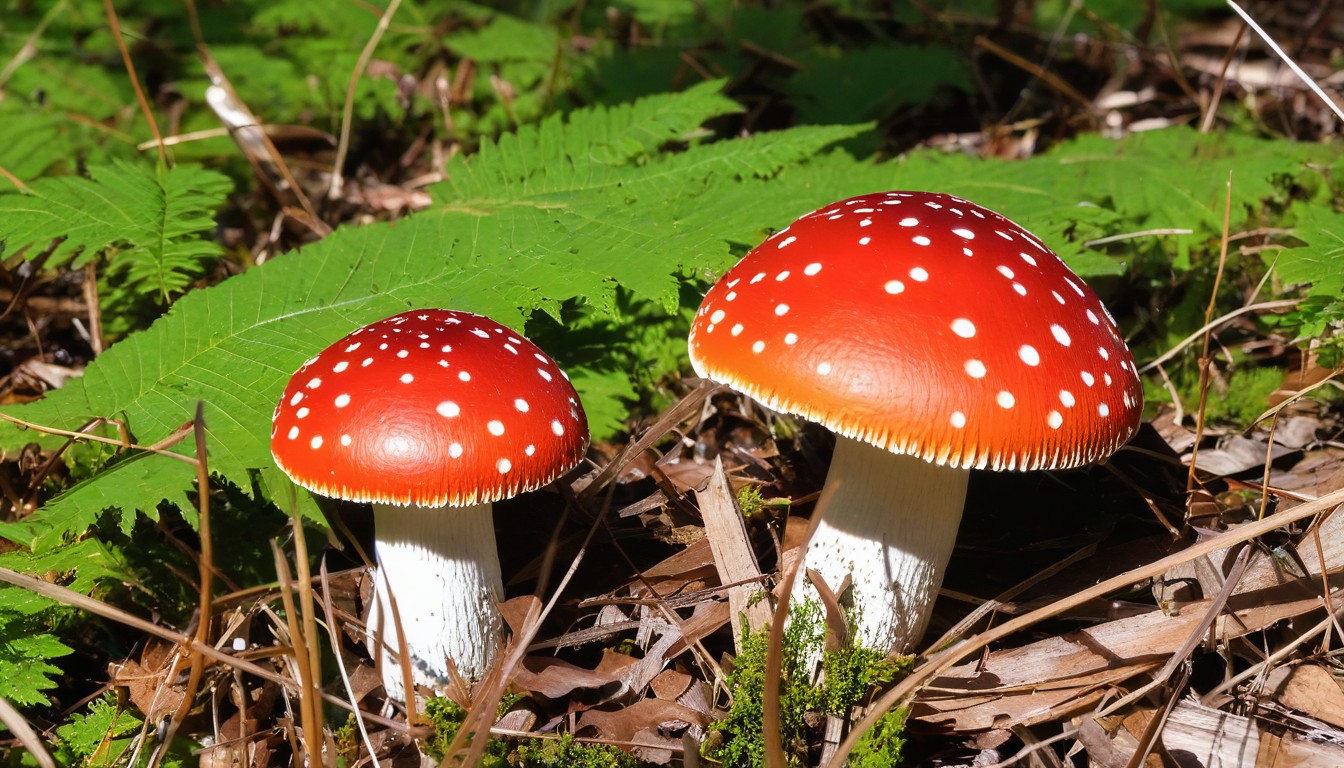
While mushroom foraging can be thrilling, it’s essential to know which species are safe for consumption. Proper handling and cooking techniques are crucial to prevent unwanted health risks. Below are some guidelines to ensure safe and enjoyable mushroom consumption:
Identify safe species
Get familiar with the native mushroom species in Wyoming and distinguish them from potentially dangerous ones. When in doubt, don’t consume any mushroom until you have a definitive identification by an expert.
Proper handling
Consider wearing gloves when handling wild mushrooms, especially if you have cuts or scratches on your hands. Always clean them thoroughly before cooking. Discard any mushroom with signs of spoilage, such as bruises, insects, or strong odors.
Cooking techniques
Cooking is a crucial step to neutralize any toxins in poisonous mushrooms, rendering them safe for consumption. Safe species can be eaten raw, but cooking them can improve their texture and flavor. Avoid eating or tasting raw or uncooked mushrooms, except for safe species.
Mushrooms Suitable for Raw Consumption | Mushrooms Suitable for Cooked Consumption |
|---|---|
|
|
Note: This table highlights some of the safe mushroom species in Wyoming suited for raw or cooked consumption. Always ensure proper identification before consuming any wild mushrooms.
By following these guidelines, you can enjoy safe and delicious mushroom dishes while exploring Wyoming’s natural beauty. Stick to safe mushroom species, handle them with care, cook them thoroughly, and rely on expert identification when in doubt.
Emergency Measures and First Aid
Accidental ingestion of poisonous mushrooms can quickly turn a pleasant foraging experience into a medical emergency. It’s essential to take appropriate measures immediately to minimize the potential impact on your health and wellbeing.
If you suspect that you or someone else has ingested a poisonous mushroom, take the following emergency measures:
- Remain calm and quickly move away from the mushroom patch.
- Try to identify the mushroom and take a sample or photo if possible to assist with proper identification.
- Do not induce vomiting or take laxatives unless directed by a medical professional.
It’s crucial to seek professional medical assistance promptly if you have ingested a poisonous mushroom. Delayed treatment can cause irreversible damage or even prove fatal. Do not wait for symptoms to appear, and do not rely on home remedies or alternative medicines to treat the issue.
If medical assistance isn’t immediately available, take the following first aid measures to alleviate the symptoms:
- Drink plenty of fluids to flush out your system.
- Take activated charcoal if available, which may help absorb some toxins.
- Monitor your symptoms and record what you have ingested. Bring this information with you to the medical facility.
Remember, prevention is always better than cure. Always be cautious while foraging for mushrooms, learn to identify poisonous species, and adhere to safety guidelines to avoid accidental ingestion. Stay informed, stay alert, and stay safe!
Conclusion
When exploring the natural beauty of Wyoming, it’s essential to be aware of the potential dangers presented by poisonous mushrooms. By understanding the risks and familiarizing yourself with native species, you can minimize the chances of accidental ingestion and ensure a safe and enjoyable foraging experience.
Remember, safety should always be your top priority. When in doubt, seek professional help and never take chances with your health. By following the safety tips outlined in this article, you can greatly reduce the risk of mushroom-related incidents.
Lastly, continued education is crucial to becoming proficient in identifying and avoiding poisonous mushrooms. Make sure to refer to the resources and guidebooks provided in this article to stay informed and enhance your safety measures.
With the right preparation and caution, you can fully enjoy Wyoming’s beautiful landscapes and all the unique flora they have to offer. Stay safe, and happy mushroom foraging!
FAQ
How can I identify poisonous mushrooms in Wyoming?
To identify poisonous mushrooms, look out for key visual indicators such as bright colors, distinctive odors, and unusual features like spores or gills. It is crucial to consult reputable identification resources or experts before consuming any mushrooms found in the wild.
What are the potential health risks associated with consuming poisonous mushrooms?
Ingesting toxic mushrooms can lead to a range of health risks, including gastrointestinal distress, organ failure, or even death. It is vital to seek immediate medical attention if you suspect mushroom poisoning.
Are there specific areas in Wyoming where mushroom foraging is particularly popular?
Yes, Wyoming offers several popular mushroom foraging areas, including the Bighorn National Forest, Medicine Bow National Forest, and Shoshone National Forest. These regions are known for their diverse mushroom species and attract foragers from near and far.
What safety precautions should I take when mushroom foraging?
When foraging for mushrooms, it is essential to wear appropriate gear, such as gloves and boots, and carry a basket or paper bag for collecting mushrooms. Avoid consuming any mushrooms unless you are certain they are safe, and always leave some behind for propagation and biodiversity.
Are there any resources or guidebooks that can help me educate myself about poisonous mushrooms in Wyoming?
Yes, there are several resources and guidebooks available to help you educate yourself about the mushroom species found in Wyoming. Some recommended options include “Mushrooms of the Rocky Mountain Region” by Vera Stucky Evenson and Michael Kuo or “Mushrooms of the Redwood Coast” by Noah Siegel and Christian Schwarz.
Can I consume mushrooms found in Wyoming if I am unsure of their safety?
It is strongly advised against consuming any mushrooms unless you can positively identify them as safe. If in doubt, it is best to consult an expert or rely on reputable resources before consuming any wild mushrooms.
What should I do in case of accidental ingestion of a poisonous mushroom?
If you suspect you ingested a poisonous mushroom, it is crucial to seek immediate medical assistance. While waiting for professional help, do not induce vomiting unless instructed by a healthcare professional and try to retain a sample of the mushroom for identification purposes.

